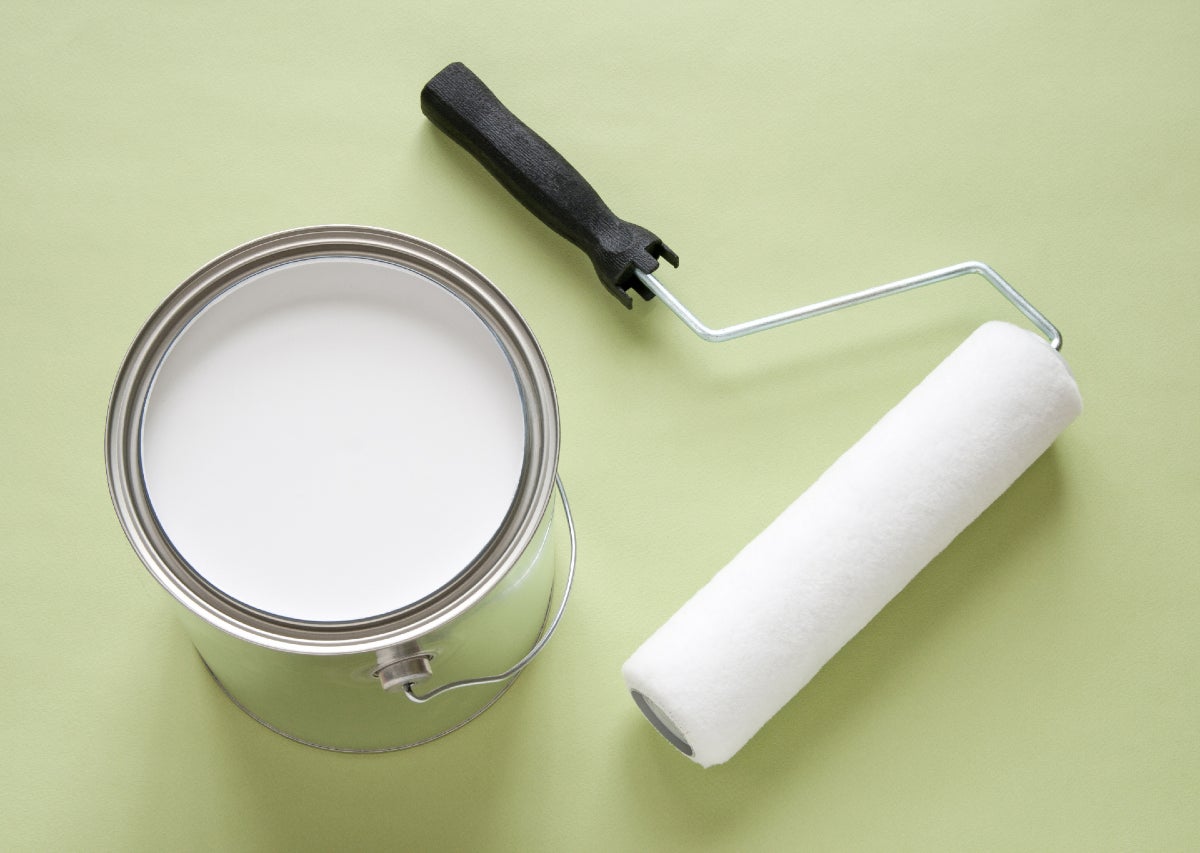There are many ways to conserve energy at home, from installing solar panels to setting up smart lighting systems. But what if a simple coat of paint could do the trick?
A team of engineers from Purdue University recently developed the world’s whitest shade of paint—it received the official Guinness World Records title—and scientists say it could be used to drastically conserve energy, possibly even eliminating the need for air conditioning. The result of a seven-year project, the acrylic product and the corresponding report came about after researchers set out to create a paint that would reflect sunlight away from a building for an interior cooling effect.
Typical commercial white paint gets warmer rather than cooler, and current cooling paint products reflect only 80 to 90 percent of sunlight. The new shade, however, reflects 98.1 percent of sunlight—and that’s where the key source of its sustainable power lies. Conventional air conditioners move hot air from inside to outside, which means heat stays on Earth and contributes to global warming. A paint as reflective as this one sends heat from the sun directly back into deep space rather than trapping it in the atmosphere.
As a result, the paint cools its coated surface to below the surrounding temperature without consuming power or producing carbon emissions—and at a cooling power of 10 kilowatts, it’s more effective than most household air conditioners. The team’s tests have shown that the paint can keep a surface around 8 degrees cooler than its ambient temperature in the afternoon and up to 19 degrees cooler at night.
“Something as simple as paint can really help in the extremely important issue of climate change,” says Xiulin Ruan, a professor of mechanical engineering at Purdue and leader of the research team behind the product, on a recent episode of the university’s This Is Purdue podcast.
According to Ruan, there’s a cost benefit to the new shade as well. Analysis of buildings painted with the product in Phoenix and Reno, Nevada, has shown that the paint can save up to 70 percent of air conditioning costs during the summer months. Additionally, when applied on the rooftop of the average 1,000-square-foot ranch house, a coat of the paint could save one dollar per day on a homeowner’s summer electric bill.
The secret ingredient is a high concentration of a chemical compound called barium sulfate, which also gives photo paper and certain cosmetics their white hue. Commercial white paints instead use titanium dioxide, which absorbs UV light. Not only does barium sulfate reflect UV rather than absorbing it, but through the use of different-sized particles within a paint mixture, it can reflect light on multiple wavelengths and cast off the whole spectrum of sunlight in a way that commercial paint cannot.
This particular method of energy conservation is already being implemented with similarly reflective shades—in recent years, New York coated nearly 10 million square feet of rooftops white, while Los Angeles began spending $40,000 per mile to paint its streets white. As far as the new ultrawhite shade goes, researchers have reportedly partnered with a company and are working toward putting the paint on the market. They’re also developing cooling paints in nonwhite shades—they’re optimistic about potentially contributing to a colorful, cooler world.
Homepage image: Adobe Stock | ©Studio Light & Shade





























